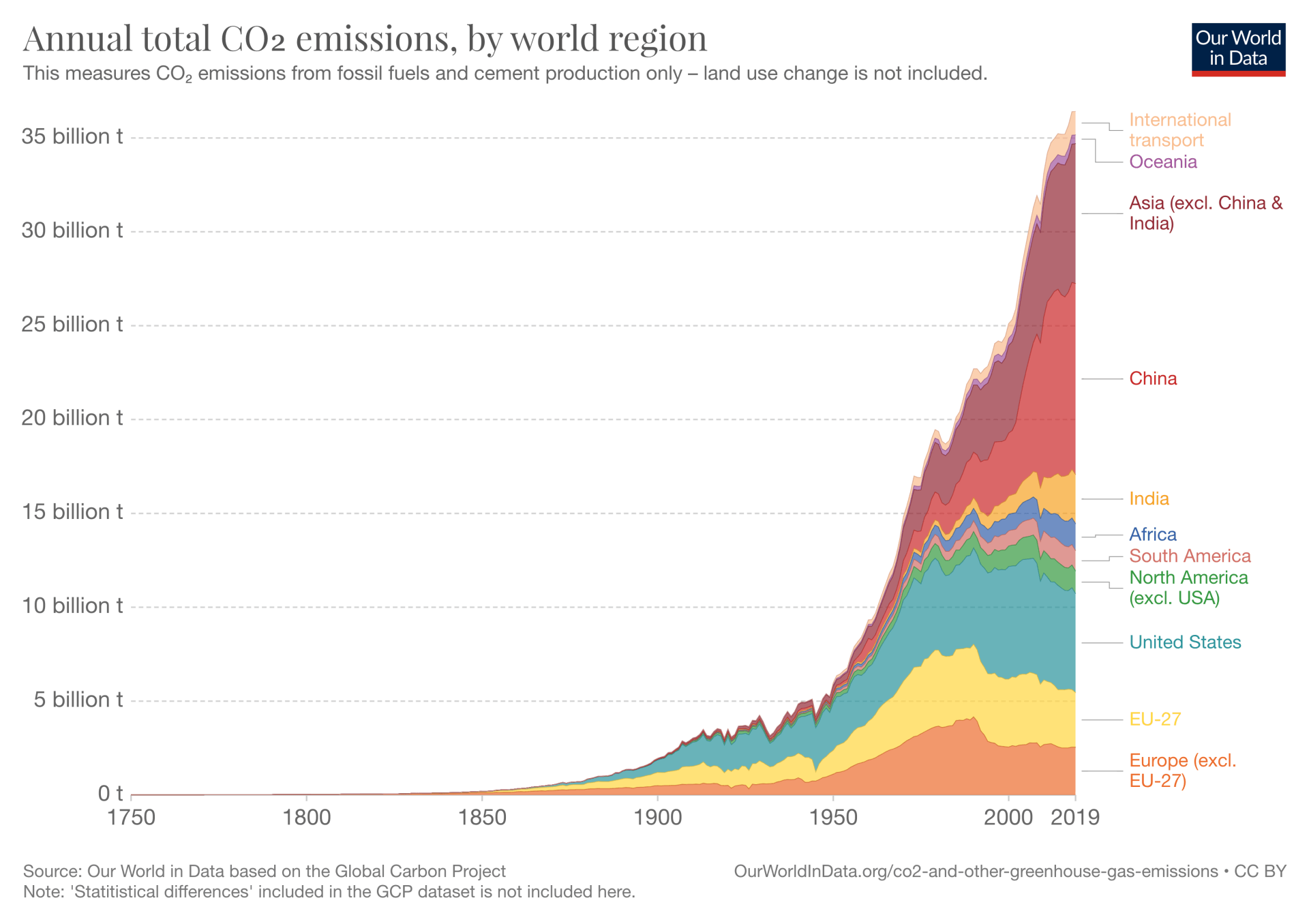- HOME
- LEARN
- TEACH
- TAKE ACTION
- WHAT YOU CAN DO
- PUT PEOPLE AND PLANET BEFORE PROFIT
- REPLACE OIL WITH RENEWABLE ENERGY
- EMBRACE A SUSTAINABLE LIFESTYLE
- CREATE NO-FISHING ZONES IN THE OCEAN
- FARM SMARTER AND EAT LESS MEAT
- PROTECT THE FORESTS
- RAISE PEOPLE OUT OF POVERTY TO SLOW POPULATION GROWTH
- CHANGE HOUSING AND HABITS
- CONSIDER TRANSPORTATION
- RETHINK TRAVEL
- OUR PARTNERS
- CONNECT
Decisions made and actions taken today will shape the world of 2100
Since the 1850’s our planet has been warming because increasing human activity has been putting a blanket of greenhouse gasses into the atmosphere.
That insulating blanket must be drawn down to mitigate the destructive impact of global warming. Easier said than done, but there are solutions.
The planet’s population was 2.3 billion when I was born in 1937 and the wild, open space was 66%.
Sir David Attenborough, who has so ably documented our planet throughout his magnificent career, is 94. He and I both started extensive worldwide travel in the mid 1950’s.
Now the population has exploded to 7.8 billion and open space has shrunk to a mere 35%.
Projections are grim: population will expand further to 10.9 billion people by 2100.
Who knows how much more open space will be left by then?
If global warming is not reversed the future of human life on our planet is bleak.
The planet will survive; we might not
How can we stop the #ClimateCrisis from destroying our ability to inhabit the planet?
New ParagraphIf population growth can be reduced and if governments, industry, academia and all of us relentlessly dedicate our creativity and energy we can start drawing down that insulating blanket of greenhouse gasses and solve this problem so that our children and grandchildren will have a healthy, thriving planet to enjoy.
Sir David’s October 2020 film, his “witness statement”; A Life on Our Planet; is eye-opening and powerful. I urge you to see it.
He describes the problem graphically, in his own inimitable and familiar style, and offers hope -
“7 actions to save the world”.
I too am hopeful and optimistic that this destructive planetary warming can be reversed so that future generations may have as much joy as I have experienced in my childhood, and as an adult.
Attenborough’s “7 actions” are:
- Put people and planet before profit.
- Replace oil with renewable energy.
- Embrace a sustainable lifestyle.
- Create no-fishing zones in the ocean.
- Farm smarter and eat less meat.
- Protect the forests.
- Raise people out of poverty to slow population growth.
These are overarching objectives (with the exception of “embrace a sustainable lifestyle” and “eat less meat”); strategies which require all levels of government and, very importantly, the private sector to create new technological solutions; to take decisive action and implement (and fund) global commitments and programs.
As individuals and families, we must do our part as well. Millions of people taking action can make this dream of a regenerated, joy-filled planet a reality.
A major leadership role is already being assumed by the world’s “under 40’s”, who ‘get it’.
Much more work needs to be done in the schools. Today’s youngsters will reap the benefits if they can be energized to become part of the solution.
Here’s what we ALL can do, as individuals and families
Alarm bells have been ringing loudly since the 1980’s.
Action is being taken, increasingly, on many fronts – the Paris Accords, Governments, Private Industry, Academia and more; dealing with “big picture” issues.
What’s missing, in my opinion, is concerted effort and action at the personal and family level.
We need millions and millions of people in the developed world (particularly in the US) doing everything they can, consistently, to reduce / mitigate (or offset) their “carbon footprint”, the global measurement standard of which is the Metric Tonne of Carbon – 2,205 US Pounds.
“Personal use” (housing, transportation, food and services) is approximately 5 Tonnes per person per year (Global Average); it’s 6.5 Tonnes in the EU and 16.5 Tonnes in the US.
Higher household income drives a larger carbon footprint in the US (and elsewhere).
The carbon footprint in the US is 75 Tonnes, per person, at an annual family income between $120,000 - $150,000. Above $150,000 it’s 100 Tonnes, per person.
The principal factors in housing are utilities; in transportation its fuel (and manufacturing new vehicles); in food it’s the amount of meat in the diet and food waste (a shocking statistic – the carbon footprint of US food waste is greater than that of the airline industry. Wasted food accounts for approximately 8 percent of all global greenhouse gas emissions).
These insights provide a short list of things that all of us can address, to make a difference.
Housing - make sure your home is well insulated. Put on a sweater rather than turning up the thermostat (and use less air-conditioning). Be conscious to running full loads in the dishwasher and washing machine (and turn down the hot water heater and take shorter showers). Use the clothes dryer at low heat (or just “air dry”).
LED Lamps have up to 25 times the life of incandescent, and use up to 80% less electricity.
Transportation - Keep your existing vehicle longer, and replace it with a used one (or buy an Electric Vehicle).
Food - Use less meat in your diet and for goodness’s sake, pay attention to food waste.
These behavioral ways to reduce your Carbon Footprint should become second-nature.
Travel – This can be a minor item, or, for many of us explorers, a significant one.
There’s an excellent, easy-to-use calculator for the carbon footprint of air travel (including multi-leg trips) – The International Civil Aviation Organization (IACO).
A round trip flight from Newark to Auckland is 1,300 Kg in coach and 2,600 Kg (slightly over one Tonne) in “premium”.
You can buy Carbon Offsets (credits) to be even more accountable for your impact beyond what you can accomplish by behavioral changes.
A carbon credit represents the reduction/removal of one tonne of CO2 equivalent (tCO2e) from the atmosphere.
Acquiring Carbon Credits – There are numerous options to choose from on the internet – some excellent; some are bad, or even worse – scams!
My provider of choice is Gold Standard.
I choose to not fuss with a lot of detailed calculations to figure out my “exact” carbon footprint. I just buy around 100 Tonnes of offsets each year.
Gold Standard has many projects that you can support. I select one or more clean energy projects and reforestation / sequestration projects.
Depending on the projects I choose to support, 100 Tonnes of offsets cost me between $1,000 and $2,000 per year.
I have, and will continue, to offset the carbon footprint of my travel.
Here’s what am doing, and will be doing going forward.
I have started a non-profit organization, Champions of the Planet.
It’s vision and mission are to be a catalyst in energizing individuals and families to become passionately engaged in taking proactive action to reverse #GlobalWarming, which is rapidly choking the life out of our planet, and encouraging others to do the same.
Go to our website
championsoftheplanet.org for resources, ideas and inspiration.
Visit our Facebook Group; Champions of The Planet; a platform for posting and sharing ideas and experiences, focused on fostering the change that is needed to accelerate the process of “drawdown” and eliminate the existential threat to we humans that is staring the next generations in the face. Join the conversation and learn what others are doing (and share your ideas with others).
Every Person
Every Organization
Every Business
Everyone
Should be a Champion of the Planet
Reach out to me with thoughts, ideas, discussion – together we can be the catalysts for the change that’s needed to reverse this frightening downward spiral that Attenborough and I have observed in our long lifetimes. Future generations should have as much joy in the natural world as he and I have experienced.
JOIN OUR PERIODIC NEWSLETTER
Thank you. We are delighted you have signed up for our newsletter. Don't worry, we won't be crowding your inbox unless it something newsworthy.
Please try again later




